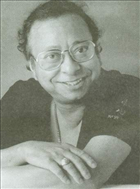


In the business of music, the ultimate merit in the eyes of peers is success. Everything else is secondary, if at all, relevant. Paradoxically, if Rahul Dev Burman, the best loved music composer of Bollywood ever inspires universal awe, admiration and nostalgia, it has more to do with the longevity of his compositions rather than sheer success. It is also the rediscovery of musical essence of the vast repertoire of melodies that did not do well during their times, mostly due to bad promotion.
Is there a key to the secret of RD’s success? There are some obvious, facile answers. Like, he cared a lot for the situation, that he poured every ounce of his inspiration and creative energy into planning the movement of the song, that he knew how to best use the voices of Kishore and Asha, that he knew when exactly he needed the little extra from Lata or Manna Dey. But there was something more. RD could feel the need of the era. The early seventies was troubled times. Hippie Cult, Flower Power, Naxalite, Leftist, etc. were words that were no longer taboo. The common denominator was that the term ‘youth’ was growing in importance. RD, himself a rebel, understood the pulse of the youth. And that was his most coveted secret in the string of success he had in that period.

As more and more films were being focussed on the youth, RD used this opportunity to compose with the young listener in mind. It was with this force that RD brought to our film music a new look, a new vitality, as a composer who understood Western harmony, Indian melody, recording technology and unexpressed sentiments of the youth. And in the process harped upon the basics of any creative pursuit: innovation. His thorough knowledge of both Indian classical music and Western chord system also came in handy in composing songs that were a mix of multiple ragas and chords. For example, Kuch to log kahenge from the film Amar Prem, uses the ragas Khamaj and Kalavati, while the progression is definitely chord based. Innovation was not restricted to composing the songs only. They extended to use of new instruments, recording technology, beat forms, composing without using the tabla, creation of special instruments to convey a specific effect in mind, capture natural sounds, and a lot many more. Who can forget the memorable banshee wails created specially by an instrument developed by RD for Gabbar’s signature tune in Sholay?
Is there a key to RD’s longevity? If one considers the fact that RD could compose an exceedingly soulful number like Aja piya tohe pyar doon (Lata in Baharon ke Sapne) where the entire rhythm has been maintained on an electric guitar and not use the tabla at all, way back in 1966, yes. As a composer, he was, in the opinion of many, light years ahead of his peers. Rahul Dev Burman’s foremost desire when writing music was to express himself in a simple and unadulterated way. He regularly consulted his panel of assistants and musicians for genesis of ideas that could later be translated into complete songs. He believed in the concept of jamming, a term of common usage in Western music, and many of the tune and rhythm forms were the result of his jammin